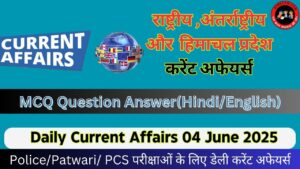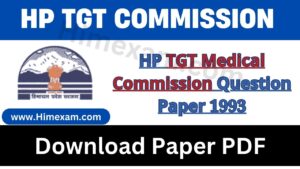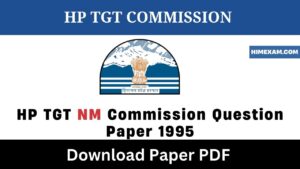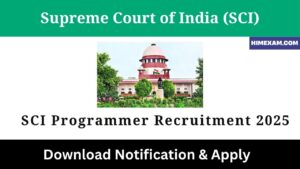Post-Mauryan Period MCQ Question Answer
||Post-Mauryan Period MCQ Question Answer||Post-Mauryan Period Question Answer In English||
1. The earliest specimen of ‘Kavya’ style is found in the inscription of
(A) Rudradaman of Kathiawar
(B) Ashoka
(C) Rajendra I
(D) None of the above
2. Which inscription tells about the various achievements of Rudradaman-I?
(A) Junagarh
(B) Bhitari
(C) Nasik
(D) Sanchi
3. Which one of the following IndoGreek rulers issued lead coins?
(A) Strato-II
(B) Strato-I
(C) Demetrius
(D) Menander
4. Who among the following was not a contemporary of the other three?
(A) Bimbisara
(B) Gautama Buddha
(C) Milinda
(D) Prasenjit
5. Who renovated Sudarshan lake without using forced labour?
(A) Chandragupta Maurya
(B) Bindusar
(C) Ashoka
(D) Rudradaman-I
6. The largest number of copper coins in Northern and North-Western India were issued by
(A) Indo-Greeks
(B) Kushans
(C) Sakas
(D) Pratiharas
7. Who amongst following issued gold coins regularly in ancient India?
(A) Satavahana
(B) Saka
(C) Kushan
(D) Parthian
8. Buddha is depicted on the coins of
(A) Vima Kadphises
(B) Kanishka
(C) Nahpaad
(D) Budhagupta
9. Which of the following Kings is credited to have issued gold coins for the first time?
(A) Kujula Kadphises
(B) Vima Kadphises
(C) Kanishka
(D) Huvishka
10. Who among the following introduced gold coins for regular use in India?
(A) Vima Kadphises
(B) Kujul Kadphises
(C) Kanishka
(D) Hermwes
11. Which God is found depicted on Yaudheya coins?
(A) Vasudeva
(B) Shiva
(C) Indra
(D) Kartikeya
12. What is the date of Sarnath Buddhist image inscription of Kanishka?
(A) 78 A.D.
(B) 81 A.D.
(C) 98 A.D.
(D) 121 A.D.
13. In which year, the coronation of Kushan King Kanishka was held?
(A) 178 B.C.
(B) 101 A.D.
(C) 58 B.C.
(D) 78 A.D.
14. When was Saka Samvat initiated?
(A) 58 A.D.
(B) 78 A.D.
(C) 320 A.D.
(D) 606 A.D.
15. How much is the year difference between the Saka Samvat and Vikram Samvat?
(A) 57 years
(B) 78 years
(C) 135 years
(D) 320 years
16. Chaitra 1 of the national calendar based on the Saka Era corresponds to which one of the following dates of the Gregorian calendar in a normal year of 365 days?
(A) 22nd March (or 21st March)
(B) 15th March (or 16th May)
(C) 31st March (or 30th March)
(D) 21st April (or 20th April)
17. When was Vikram Samvat started?
(A) 78 A.D.
(B) 57 B.C.
(C) 72 B.C.
(D) 56 B.C. 1
8. Which one of the following will be the year of Saka Samvat in December, 2009?
(A) 1931
(B) 1952
(C) 2066
(D) 2087
19. Ashvaghosha was contemporary of
(A)Ashoka
(B) Chandragupta-II
(C) Kanishka
(D) Harshvardhan
20. Which one of the following is not associated with the Court of Kanishka?
(A) Ashvaghosha
(B) Charaka
(C) Nagarjuna
(D) Patanjali
21. Who of the following did not adorn the court of Kanishka-I?
(A) Ashvaghosha
(B) Parshva
(C) Vasumitra
(D) Vishakhadatta
||Post-Mauryan Period MCQ Question Answer||Post-Mauryan Period Question Answer In English||
22. Which of the following cities is not mentioned in the Rabatak inscription of Kanishka?
(A) Shravasti
(B) Kaushambi
(C) Pataliputra
(D) Champa
23. Who among the following Ayurvedacharyas was educated at Taxila University?
(A) Sushruta
(B) Jivaka
(C) Charaka
(D) Both (B) and (C)
24. Which dynasty ruled over India after Shunga dynasty?
(A) Satvahana
(B) Kushana
(C) Kanva
(D) Gupta
25. Who among the following rulers is stated as protector of ‘Varna System’?
(A) Pushyamitra Sunga
(B) Kharvela
(C) Gautamiputra Satkarni
(D) Vasudeo
26. Which dynasty was most powerful after Maurya in Southern India?
(A) Satvahana
(B) Pallava
(C) Chola
(D) Chalukya
27. Simuka was the founder of which of the following dynasties?
(A) Chera
(B) Chola
(C) Pandya
(D) Satavahana
28. Which Chinese general had defeated Kanishka?
(A) Pan Chao
(B) Ban Yong
(C) She Huang Ti
(D) Ho-Ti
29. Which of following dynasty empire was expanded even outside of India?
(A) Gupta dynasty
(B) Maurya dynasty
(C) Kushan dynasty
(D) None of the above
30. The institution of child marriage started in which period?
(A) Maurya period
(B) Kushan period
(C) Gupta period
(D) In the time of Harshavardhan
31. Which one of the following pairs is correctly matched?
(A) Harappan Civilisation – Painted Grey Ware
(B) The Kushans – Gandhara School of Art
(C) The Mughals – Ajanta Paintings
(D) The Marathas – Pahari School of Painting
32. Art of Gandhara style flourished during the reign of
(A) Kushans
(B) Guptas
(C) Akbar
(D) Mauryas
33. Which one of the following is not correctly matched?
List – I List – II (Dynasties) (Metals of coin)
(A) Kushanas – Gold and Copper
(B) Gupta – Gold and Silver
(C) Satavahanas – Gold
(D) Kalachuris – Gold, Silver and Copper
34. Bamiyan of Afghanistan was famous for
(A) Hindu temple
(B) Work of elephant teeth
(C) Gold coin of coinage
(D) Buddha statue
35. The art style which combines Indian and Greek feature is called
(A) Sikhar
(B) Vera
(C) Gandhara
(D) Nagara
36. The Gandhara School of art is the synthesis of
(A) Indian and Persian Art
(B) Indian and Chinese Art
(C) Indian and Turk-Afghan Art
(D) Indian and Greek Art
37. Which one of the following sculptures invariably used green schist as the medium?
(A) Mauryan sculptures
(B) Mathura sculptures
(C) Bharhut sculptures
(D) Gandhara sculptures
38. With reference to the invaders in ancient India, which one of the following is the correct chronological order?
(A) Greeks – Sakas – Kushanas
(B) Greeks – Kushanas – Sakas
(C) Sakas – Greeks – Kushanas
(D) Sakas – Kushanas – Greeks
39. First Persian ruler who captured some part of India was
(A) Cyrus
(B) Cambyses
(C) Darius-I
(D) Shaharsh
40. Which among the following was the earliest dynasty?
(A) Chalukya
(B) Pallava
(C) Rashtrakut
(D) Satavahana
41. Which Purana consists of the longest list of Andra Satavahana Kings?
(A) Vayu Purana
(B) Vishnu Purana
(C) Matsya Purana
(D) None of the above
42. The capital of the Satavahanas was located at
(A) Amaravati
(B) Nanded
(C) Naldurg
(D) Durg
43. Which of the following places was the capital of Satvahanas?
(A) Pratisthan
(B) Nagarjuna Konda
(C) Shakal or Sialkot
(D) Pataliputra
44. For which of the following rulers ‘Ekabrahmana’ has been used?
(A) Pushyamitra Shunga
(B) Kharavela
(C) Gautamiputra Shatakarni
(D) Susharman
45. King Kharavela is related to
(A) Piller inscription of Girnar
(B) Piller inscription of Junagarh
(C) Hathigumpha inscription
(D) Sarnath inscription
46. Which of the following Kings was a Patron of Jainism?
(A) Ashoka
(B) Harsha
(C) Pulakeshin II
(D) Kharavela
47. The King of Kalinga Kharavela was related to which of the following dynasty?
(A) Chedi
(B) Kadamba
(C) Kalinga
(D) Haryanka
48. Kalinga’s King Kharvel was associated with
(A) Mahameghvahana dynasty
(B) Chedi dynasty
(C) Satvahana dynasty
(D) Rath-Bhojak dynasty
49. Who among the following kings had heavily leaned towards Jainism?
(A) Dashratha
(B) Brihadratha
(C) Kharavela
(D) Huvishka
50. Which field was mostly contributed by Eastern Roman ruler Justinian?
(A) Law
(B) Architecture
(C) Science
(D) Literature
51. Consider the following name of contemporaries of Kanishka and select the correct answer from code given below.
1. Ashvaghosha
2. Vasumitra
3. Kalidas
4. Kamban
Code
(A) 1 and 4
(B) 2 and 3
(C) 1 and 2
(D) All of these
52. Read these statements.
Assertion (A): Kushans traded through Gulf of Persian and Red sea.
Reason (R): Their well organised naval force base was highly qualified.
In context to the above which is the correct answer?
Code
(A) Both (A) and (R) are true and (R) is the correct explanation of A
(B) Both (A) and (R) are true, but (R) is not the correct explanation of (A)
(C) (A) is true, but (R) is false
(D) (A) is false, but (R) is true
||Post-Mauryan Period MCQ Question Answer||Post-Mauryan Period Question Answer In English||
Answer Sheet 1. (A) 2. (A) 3. (A) 4. (C) 5. (D) 6. (B) 7. (C) 8. (B) 9. (B) 10. (A) 11. (D) 12. (B) 13. (D) 14. (B) 15. (C) 16. (A) 17. (B) 18. (A) 19. (C) 20. (D) 21. (D) 22. (A) 23. (D) 24. (C) 25. (C) 26. (A) 27. (D) 28. (A) 29. (C) 30. (B) 31. (B) 32. (A) 33. (C) 34. (D) 35. (C) 36. (D) 37. (D) 38. (A) 39. (C) 40. (D) 41. (C) 42. (A) 43. (A) 44. (C) 45. (C) 46. (D) 47. (A) 48. (A) 49. (C) 50. (A) 51. (C) 52. (C)
Read More: – Himachal Pradesh General Knowledge

.png)







